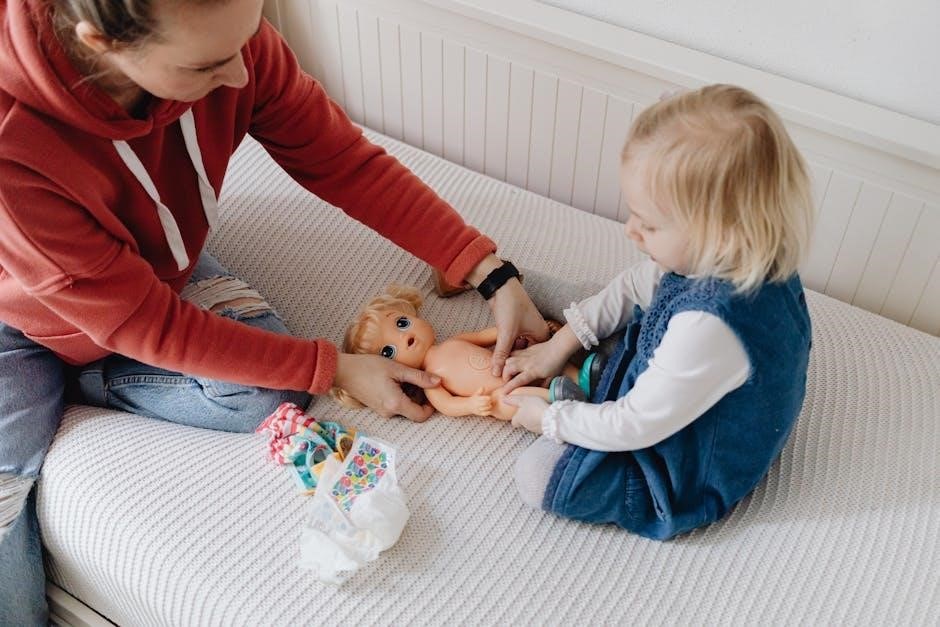Day Early Learning at Manual offers high-quality early childhood education in a safe, supportive environment. Located in the former Emmerich Manual High School, it serves children from infancy to five years old, focusing on social-emotional growth and cognitive development through play-based activities and structured curriculums like Creative Curriculum and Handwriting Without Tears. With experienced educators and modern facilities, including six new classrooms and an indoor gross motor area, the program provides a nurturing space for young learners to thrive in the Southside community.
1.1 Overview of the Program
Day Early Learning at Manual provides a comprehensive early childhood education program for children from infancy to five years old. Located in the former Emmerich Manual High School, it offers six modern classrooms, an indoor gross motor area, and a structured curriculum focused on early literacy, mathematics, and social-emotional development. The program emphasizes play-based learning, creative activities, and hands-on experiences to foster a strong foundation for future academic success.
1.2 Importance of Early Childhood Education
Early childhood education is crucial for fostering cognitive, social, and emotional development in young children. It lays the foundation for future academic success by enhancing creativity, problem-solving skills, and emotional intelligence. Programs like Day Early Learning at Manual provide a nurturing environment that encourages curiosity, builds confidence, and supports children in developing essential life skills during their most formative years.
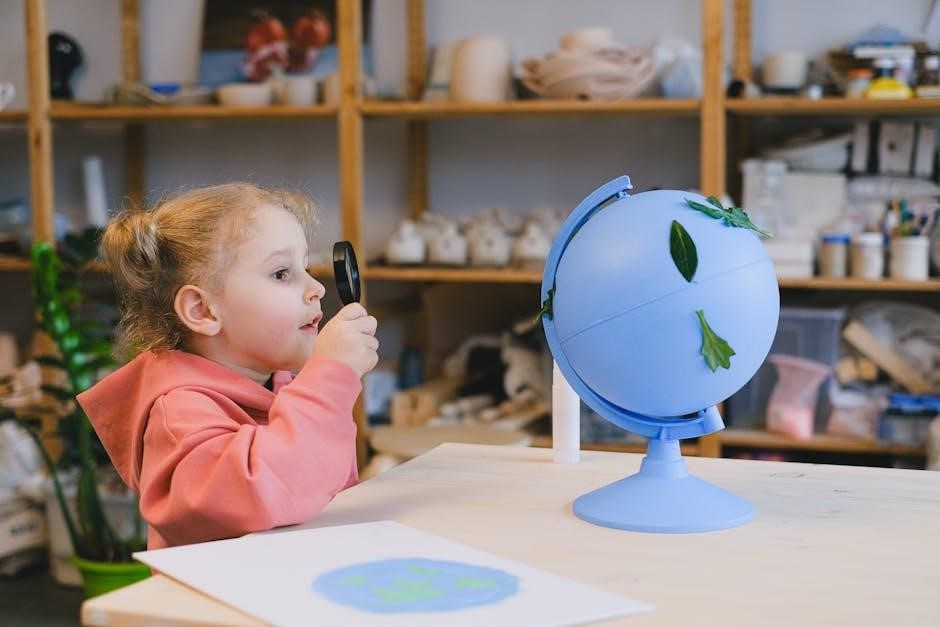
Facilities and Learning Environment
Day Early Learning at Manual offers a safe and supportive environment with modern facilities, including six new classrooms and indoor play areas for children aged infant to five.
2.1 Classroom Setup and Resources
The classrooms at Day Early Learning at Manual are designed to foster learning and exploration, with modern, age-appropriate resources and materials. Each room is equipped with educational toys, art supplies, and technology to support cognitive and creative growth. The setup encourages hands-on activities, promoting independence and curiosity in a safe, well-organized environment tailored to meet the developmental needs of young learners.
2.2 Indoor and Outdoor Play Areas
The center features spacious indoor and outdoor play areas designed to promote physical activity and creativity. The indoor gross motor area is equipped with soft flooring and age-appropriate equipment for safe movement. Outdoor spaces include playgrounds, sensory gardens, and areas for organized games, fostering exploration and social interaction while ensuring safety and accessibility for all children.
Curriculum and Programs
Day Early Learning at Manual implements a play-based curriculum, incorporating Creative Curriculum and Handwriting Without Tears. These programs foster skill development through engaging activities like singing and art.
3.1 Play-Based Learning Activities
At Day Early Learning at Manual, play-based activities are central to the curriculum. Through singing, art, and imaginative play, children develop problem-solving skills and creativity. These activities are designed to encourage social interaction and emotional growth, while also building foundational academic skills. The structured yet flexible approach allows children to explore and learn at their own pace, fostering independence, confidence, and self-expression.
3.2 Creative Curriculum and Handwriting Without Tears
The Day Early Learning at Manual incorporates the Creative Curriculum, fostering critical thinking through project-based investigations, and Handwriting Without Tears, a multisensory approach simplifying writing skills. These programs promote creativity, fine motor development, and literacy, preparing children for future academic success while maintaining engaging and interactive learning experiences tailored to young learners’ needs.

Teaching Approaches and Methods
Day Early Learning at Manual employs child-centered, play-based approaches, combining hands-on activities with theoretical foundations to foster curiosity and independence in young learners.
4.1 Child-Centered and Participatory Learning
Day Early Learning at Manual emphasizes child-centered and participatory learning, where children actively engage in hands-on activities, fostering independence and creativity. Educators encourage children to explore their interests, promoting self-directed learning and problem-solving. This approach ensures children are at the forefront of their educational journey, developing essential skills through meaningful interactions and experiences. The curriculum is tailored to meet each child’s unique needs, creating a nurturing environment that supports overall development.
4.2 Combining Theory with Practical Examples
Day Early Learning at Manual integrates theoretical knowledge with practical, hands-on experiences to create engaging lessons. Educators use methods like play-based activities and storytelling to apply learning theories, ensuring children grasp concepts through real-world applications. This balanced approach supports cognitive and social development, making learning both meaningful and enjoyable for young students. The curriculum is designed to connect theory with practice seamlessly.
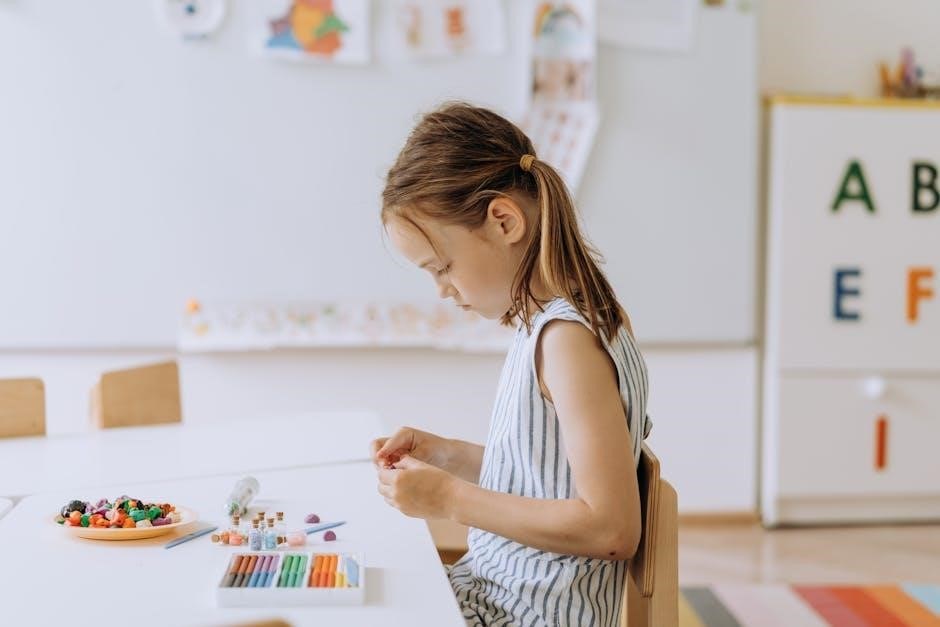
Community Involvement and Partnerships
Day Early Learning at Manual actively collaborates with local organizations to enrich educational experiences. Partnerships provide resources, workshops, and support, fostering a connected community that benefits children and families.
5.1 Collaboration with Local Organizations
Day Early Learning at Manual partners with local organizations to enhance educational opportunities. Collaborations with groups like Saint Michael’s College and community centers provide access to resources, workshops, and expertise. These partnerships ensure a holistic approach to early learning, offering children diverse experiences and fostering strong community ties for their development and family support.
5.2 Parental Engagement and Support
Day Early Learning at Manual emphasizes strong parental involvement through regular updates and workshops. Parents are encouraged to participate in educational activities, ensuring a seamless connection between home and school. The program offers resources like training manuals and observation tools, empowering parents to support their child’s development actively, fostering a collaborative environment for their growth and success.

Documentation and Assessment
Documentation at Day Early Learning involves tracking children’s progress through observation tools and reports. Regular assessments ensure quality education and provide feedback to guide instructional strategies effectively.
6.1 Importance of Documentation in Early Learning
Documentation in early learning at Manual is crucial for tracking children’s progress and understanding their developmental needs. It provides insights into their cognitive, social, and emotional growth, aiding educators in creating tailored learning plans. Regular documentation also fosters communication between teachers and parents, ensuring a collaborative approach to education. By maintaining detailed records, educators can identify areas of strength and opportunities for improvement, aligning instruction with individual and group needs. This process supports accountability and continuous improvement in the learning environment, ensuring Every child receives the support they need to thrive.
Moreover, documentation helps in assessing the effectiveness of curriculum implementation and instructional strategies. It serves as a tool for reflective practice, allowing educators to refine their approaches based on evidence of student learning outcomes. Through systematic documentation, the program at Manual ensures that each child’s journey is well-documented, providing a foundation for future academic success and personal development.
6.2 Tools for Measuring Learning Environments
At Day Early Learning at Manual, tools like the MELE (Measuring Early Learning Environment) Classroom Observation Tool are used to assess the quality of learning environments. These tools evaluate factors such as classroom organization, interaction quality, and resource availability, ensuring alignment with educational standards. By leveraging such tools, educators can identify strengths and areas for improvement, fostering an optimal environment for children’s growth and development.
Benefits for Children and Families
Day Early Learning at Manual provides children with enhanced cognitive and social skills through play-based activities, fostering creativity and problem-solving. Families benefit from a safe, supportive environment that promotes confidence and independence in their children, preparing them for future academic success and lifelong learning.
7.1 Cognitive and Social Development
At Day Early Learning at Manual, children experience significant cognitive and social growth. Through interactive play, they develop problem-solving skills, creativity, and critical thinking. Socially, they learn cooperation, empathy, and communication, fostering strong relationships with peers and educators. These foundational skills prepare them for academic success and lifelong social interactions, building a confident and curious mindset.
7.2 Safe and Supportive Environment
Day Early Learning at Manual prioritizes a safe and supportive environment, ensuring children feel secure and valued. Modern classrooms, indoor play areas, and experienced educators create a nurturing space for exploration and growth. The program fosters emotional well-being and social confidence, helping children build resilience and trust in a caring community-focused setting.
Challenges and Solutions
Addressing challenges like limited resources and staff training, Day Early Learning at Manual implements innovative solutions, including community partnerships and professional development, to enhance program quality and accessibility.
8.1 Addressing Early Childhood Education Challenges
Day Early Learning at Manual tackles challenges such as limited resources and staff training by implementing evidence-based solutions; The program collaborates with local organizations to secure funding and expertise, ensuring a high-quality learning environment. Professional development opportunities are prioritized, equipping educators with modern teaching strategies. These efforts aim to create a sustainable and effective early childhood education model.
8.2 Innovative Solutions for Learning
Day Early Learning at Manual employs innovative solutions like play-based curriculums and technology integration to enhance learning. The program uses tools such as Creative Curriculum and Handwriting Without Tears to engage children creatively. Interactive learning technologies and adaptive software further personalize education, fostering critical thinking and creativity. These approaches ensure a dynamic and inclusive learning environment tailored to diverse needs and abilities.
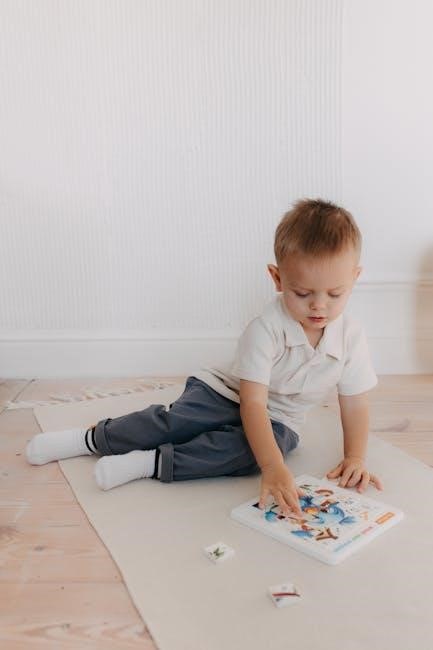
Resources and Support for Educators
Day Early Learning at Manual provides educators with training manuals, observation tools, and professional development opportunities to empower them in creating a supportive learning environment and enhancing teaching methods effectively.
9.1 Training Manuals and Observation Tools
Training manuals at Day Early Learning at Manual are comprehensive guides that outline effective teaching strategies and classroom management techniques. Observation tools, such as the MELE Classroom Observation Tool, help educators assess learning environments and identify areas for improvement. These resources ensure that educators are well-equipped to provide high-quality education and support for young learners in their care.
9.2 Professional Development Opportunities
Professional development opportunities at Day Early Learning at Manual are designed to enhance educators’ skills and knowledge. Workshops, training sessions, and access to resources like the MELE Classroom Observation Tool help teachers refine their instructional strategies. Collaborative learning environments and mentorship programs further support continuous growth, ensuring educators are equipped to deliver high-quality early childhood education.
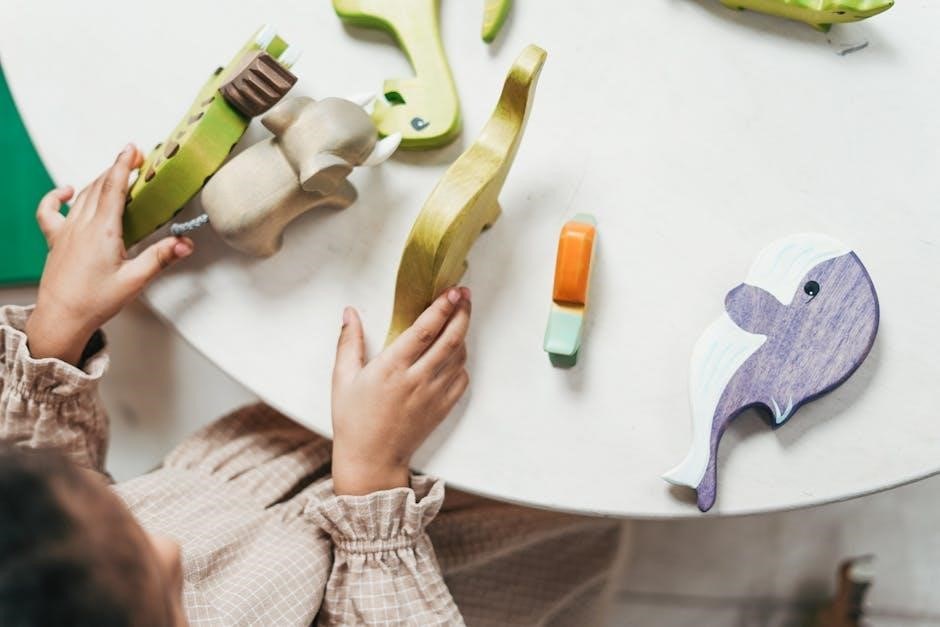
Future Goals and Expansion
Day Early Learning at Manual aims to expand services, increasing accessibility for Southside families. Future plans include adding 80 infant-to-5 seats, enhancing early learning opportunities.
10.1 Expanding Services and Accessibility
Day Early Learning at Manual plans to expand its services, adding 80 new seats for infants to 5-year-olds. This growth aims to enhance accessibility for Southside families, ensuring more children benefit from quality early education. By increasing capacity, the center addresses community demand, fostering inclusivity and affordability while maintaining its commitment to nurturing young learners in a supportive environment.
10.2 Continuous Improvement in Early Learning
Day Early Learning at Manual is committed to continuous improvement, investing in teacher training and curriculum updates. By leveraging tools like the MELE Classroom Observation Tool, the program enhances teaching strategies and learning environments. Regular assessments ensure alignment with best practices, fostering a culture of growth and innovation to provide high-quality early education that meets the evolving needs of young learners and their families.
